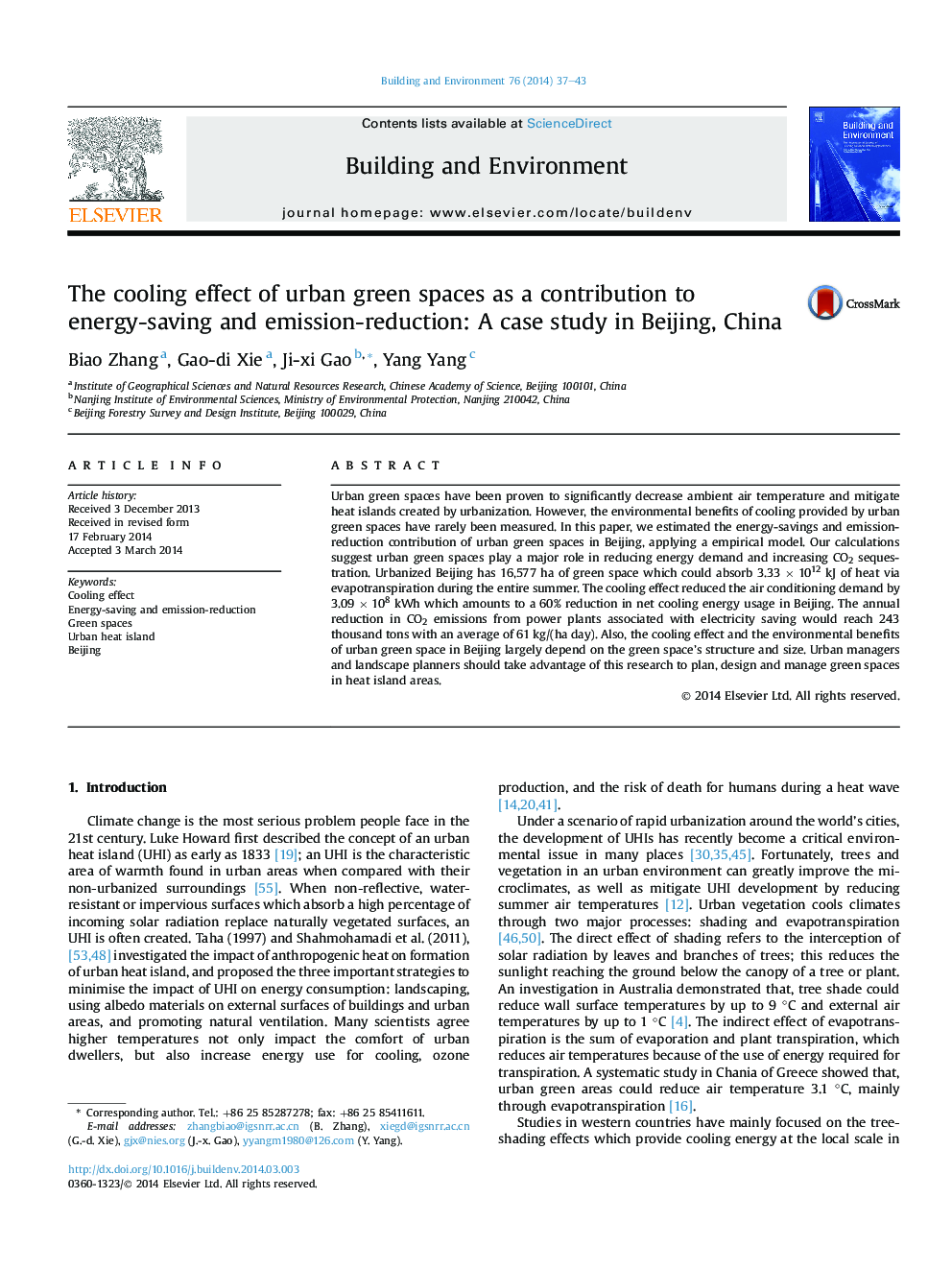| کد مقاله | کد نشریه | سال انتشار | مقاله انگلیسی | نسخه تمام متن |
|---|---|---|---|---|
| 248138 | 502548 | 2014 | 7 صفحه PDF | دانلود رایگان |
• The cooling effect and environmental benefits of Beijing's green space were analyzed.
• Green spaces can absorb 3.33 × 1012 kJ of heat via evapotranspiration during summer.
• The cooling effect annually reduced demand for air conditioning by 3.09 × 108 kWh.
• Annual reduction in CO2 emissions from power plants could exceed 243 thousand tons.
• Cooling effect and its contribution via green space structure and size are discussed.
Urban green spaces have been proven to significantly decrease ambient air temperature and mitigate heat islands created by urbanization. However, the environmental benefits of cooling provided by urban green spaces have rarely been measured. In this paper, we estimated the energy-savings and emission-reduction contribution of urban green spaces in Beijing, applying a empirical model. Our calculations suggest urban green spaces play a major role in reducing energy demand and increasing CO2 sequestration. Urbanized Beijing has 16,577 ha of green space which could absorb 3.33 × 1012 kJ of heat via evapotranspiration during the entire summer. The cooling effect reduced the air conditioning demand by 3.09 × 108 kWh which amounts to a 60% reduction in net cooling energy usage in Beijing. The annual reduction in CO2 emissions from power plants associated with electricity saving would reach 243 thousand tons with an average of 61 kg/(ha day). Also, the cooling effect and the environmental benefits of urban green space in Beijing largely depend on the green space's structure and size. Urban managers and landscape planners should take advantage of this research to plan, design and manage green spaces in heat island areas.
Journal: Building and Environment - Volume 76, June 2014, Pages 37–43
